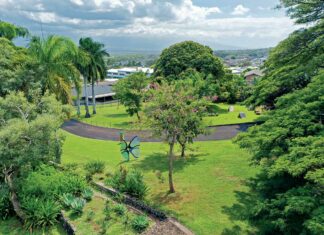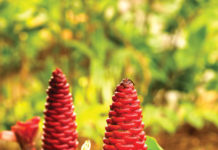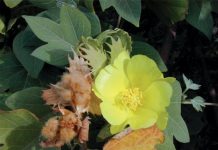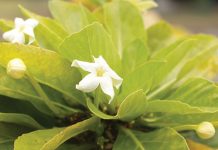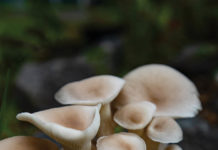The Hawaiian sandalwood trade was brief but potent. King Kamehameha bought the brig Columbia for two shiploads of sandalwood in 1817. Nine years later, the Hawaiian kingdom enacted its first written law—a sandalwood tax. To pay off increasing foreign debts, Hawaiian royals required commoners to cut and carry trees to waiting boats. Harvesters were nicknamed “kua leho” (callous back); logs often arrived stained with blood. By 1840, the sandalwood supply was exhausted.
Today, wild sandalwoods grow here and there. The coastal species ‘iliahi alo‘e (Santalum ellipticum) is most common. Chameleon-like, it sprawls low and wide at sea level and rises two stories tall at 5,000-foot elevation.
Medeiros recommends planting the green-flowered ‘iliahi alo‘e. “It’s easiest to germinate . . . a good one for your yard, a large wonderful Hawaiian tree.
“Sandalwoods have fantastic architecture. Their branches grow in right angles for that Japanese look . . . the whole plant has a bluish look, almost a jadeite green. Beautiful.”
The story of Hawaiian sandalwood is a sad one—but it’s not over yet. Imagine Maui’s hillsides again shaded by the trees. Plant one for your children’s children.




